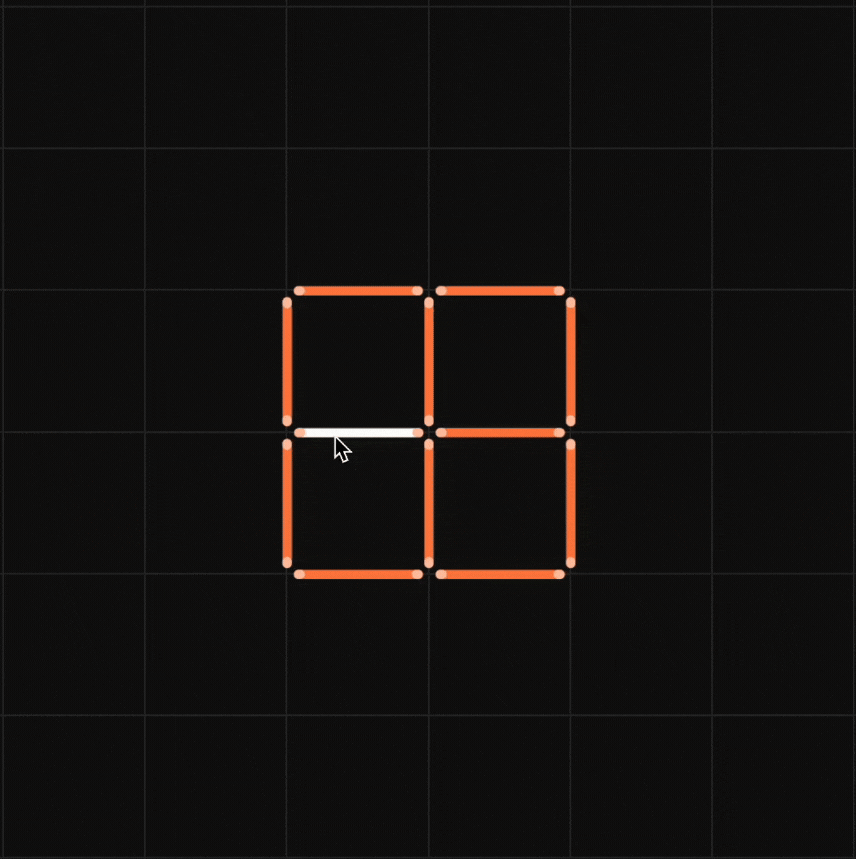

Prime Numbers 1 to 10
In order to identify the prime numbers 1 to 10, we need to find the factors of all the numbers between 1 and 10. A prime number is a positive natural number that has only two factors, 1 and the number itself. Prime numbers are always greater than 1. Out of the first 10 natural numbers, there are four prime numbers, 2, 3, 5, and 7. These numbers are said to be prime because they do not have any other factors other than 1, and the number itself. 2 and 3 are two consecutive prime numbers. Let us learn more about how to find the prime numbers from 1 to 10 and the list of these prime numbers in this article.
| 1. | How to Find Prime Numbers 1 to 10? |
| 2. | List of Prime Numbers From 1 to 10 |
| 3. | FAQs on Prime Numbers From 1 to 10 |
How to Find Prime Numbers 1 to 10?
Prime numbers are completely divisible by 1 and themselves, which means there are no remainders left when we divide the numbers by 1 or the number itself. Considering the numbers from 1 to 10 we have four prime numbers. The following steps show us how to find the prime numbers from 1 to 10. Let us represent the number between 1 to 10 as 'n'. This is called the factorization method of finding prime numbers.
Step 1: Find the list of factors of each number from 1 to 10.
Step 2: Taking each number one by one, we need to see if the factors of the number are only 1 and the number itself, then it is a prime number.
Step 3: If a number has factors other than 1 and itself, then it is not a prime number.
Let us apply the steps for all the numbers from 1 to 10 and check if they are prime in the below table:
| Number | Factors | Prime or Not Prime |
|---|---|---|
| 1 | 1 | Neither a prime nor a composite number. |
| 2 | 1 and 2 | There are only two factors (1 and the number 2). Therefore, 2 is a prime number. |
| 3 | 1 and 3 | There are only two factors (1 and the number 3). Therefore, 3 is a prime number. |
| 4 | 1,2 and 4 | There are more than two factors other than 1 and the number 4. Therefore, 4 is not a prime number. |
| 5 | 1 and 5 | There are only two factors (1 and the number 5). Therefore, 5 is a prime number. |
| 6 | 1,2, 3 and 6 | There are more than two factors other than 1 and the number 6. Therefore, 6 is not a prime number. |
| 7 | 1 and 7 | There are only two factors (1 and the number 7). Therefore, 7 is a prime number. |
| 8 | 1,2,4 and 8 | There are more than two factors other than 1 and the number 8. Therefore, 8 is not a prime number. |
| 9 | 1,3 and 9 | Factors are 1,3 and 9. There are more than two factors other than 1 and the number 9. Therefore, 9 is not a prime number. |
| 10 | 1,2,5 and 10 | There are more than two factors other than 1 and the number 10. Therefore, 10 is not a prime number. |
List of Prime Numbers From 1 to 10
The following figure shows a list of numbers from 1 to 10, in which the circled numbers are prime numbers.

Important Notes on Prime Numbers 1 to 10
Here is a list of a few points that should be remembered while studying prime numbers from 1 to 10.
- 1 is neither considered to be a prime nor a composite number.
- All prime numbers are natural numbers.
- 2 is the only even prime number between 1 and 10.
- 2 and 3 are two consecutive prime numbers between 1 and 10.
- Except 2, the prime numbers 3, 5, and 7 can be expressed as a sum of any two prime numbers. For example, 7 can be expressed as a sum of 2 and 5.
☛ Related Articles
- Prime Numbers 1 to 20
- Prime Numbers 1 to 50
- Prime Numbers Up to 100
- Prime Numbers 1 to 500
- Prime Numbers 1 to 1000
- Composite Numbers 1 to 100
- Composite Numbers 1 to 1000
- Number Names 1 to 100
- Whole Numbers from 1 to 100
- Natural Numbers from 1 to 100
Examples on Prime Numbers 1 to 10
-
Example 1: Are all odd numbers between 1 to 10 prime numbers? Give reasons to justify your answer.
Solution:
The odd numbers between 1 and 10 are 1,3,5,7,9. If a number has more than two factors other than (1 and the number) it is not a prime number. Let us check each number
- 1 is neither a prime nor a composite number.
- The numbers 3,5 and 7 have only two factors which are 1 and the same number (which is 3, 5, and 7). So they are prime numbers.
- The number 9 has three factors which are 1,3, and 9. Since there are three factors for 9, it is not a prime number.
Therefore, all the odd numbers between 1 to 10 are not prime.
-
Example 2: Find out if 9 is a prime number or not.
Solution: The list of prime numbers 1 to 10 does not cover the number 9. 9 is not a prime number because it has factors other than 1 and itself. Factors of 9 = 1, 3, 9This shows that 9 is not a prime number.
-
Example 3: Find out if 7 is a prime number or not.
Solution: The list of prime numbers 1 to 10 covers the number 7. 7 is a prime number because it has only 2 factors 1 and 7 itself. Factors of 7 = 1, 7
This shows that 7 is a prime number.

FAQs on Prime Numbers 1 to 10
What are the Prime Numbers from 1 to 10?
There are 4 prime numbers from 1 to 10. They are 2, 3, 5 and 7.
Is there an Even Prime Number from 1 to 10?
Yes, 2 is an even prime number from 1 to 10. Since 2 has only two factors (1 and itself, which is 2). It is the only even prime number from 1 to 10.
What are the Odd Prime Numbers from 1 to 10?
The odd numbers from 1 to 10 are 1,3,5,7 and 9. We know that 1 is not considered as a prime or a composite number. The number 9 also has 3 factors which are (1,3 and 9), so it is not a prime number. 3, 5 and 7 are odd prime numbers from 1 to 10, as each of these numbers has only 2 factors, which are 1 and the same number.
How to Find Prime Numbers from 1 to 10?
The prime numbers from 1 to 10 can be listed as 2,3,5 and 7. To find if a number between 1 and 10 is prime or not, we can use the following steps.
- Step 1: Find the factors of every number from 2 to 10. 1 is to be ignored as it is neither a prime nor a composite number.
- Step 2: Taking each number one by one, we need to note that if a number has any other factors other than 1 and the number itself, then it is not a prime number. For example, 4 has three factors, 1,2, and 4, so it is not a prime number.
- Step 3: If the number has only 2 factors, 1 and the number itself, then it can be classified as a prime number. For example, 5 has just two factors, 1 and 5 itself, therefore, it is a prime number.
What is the Smallest and Largest Prime Number from 1 to 10?
There are a total of 4 prime numbers from 1 to 10. They are 2,3,5 and 7. In this list, 2 is the smallest prime number and 7 is the largest prime number from 1 to 10.
What is the Sum of all Prime Numbers from 1 to 10?
All the prime numbers from 1 to 10 can be listed as, 2, 3, 5 and 7. The sum of these prime numbers is 2 + 3 + 5 + 7 = 17.
visual curriculum